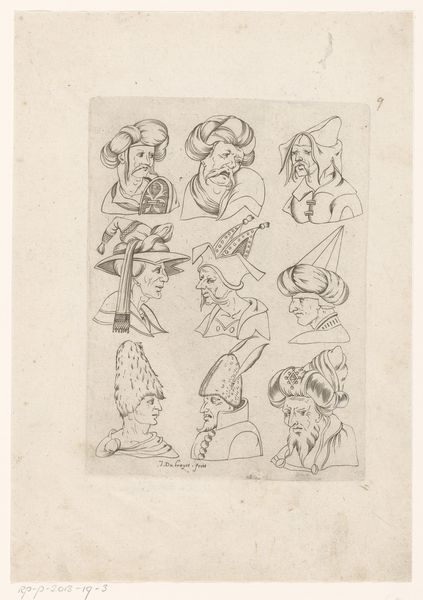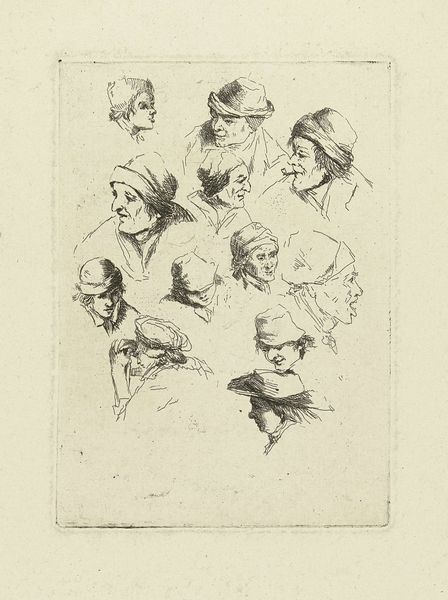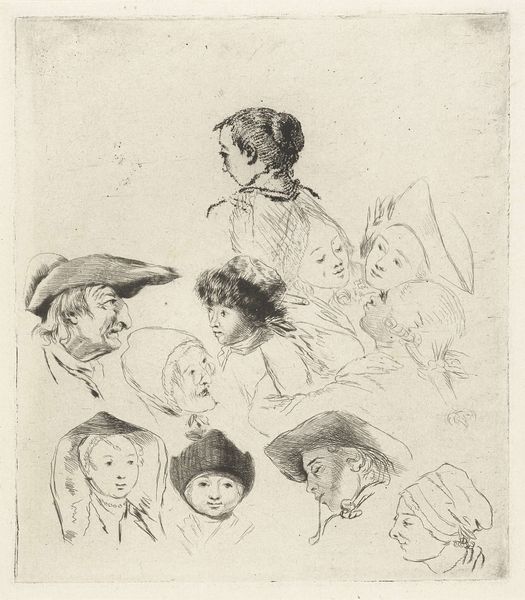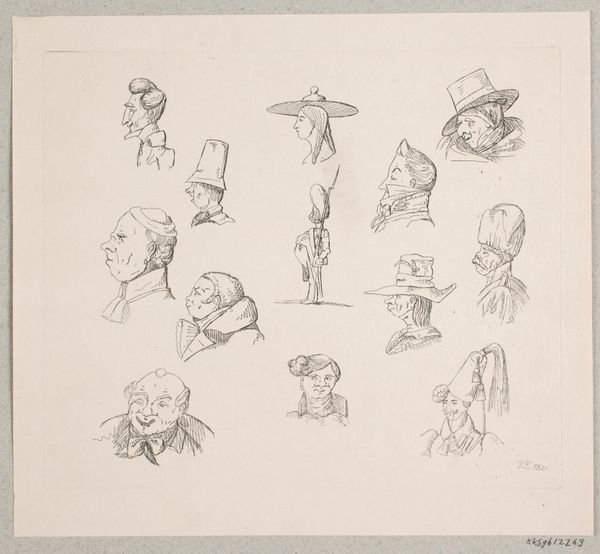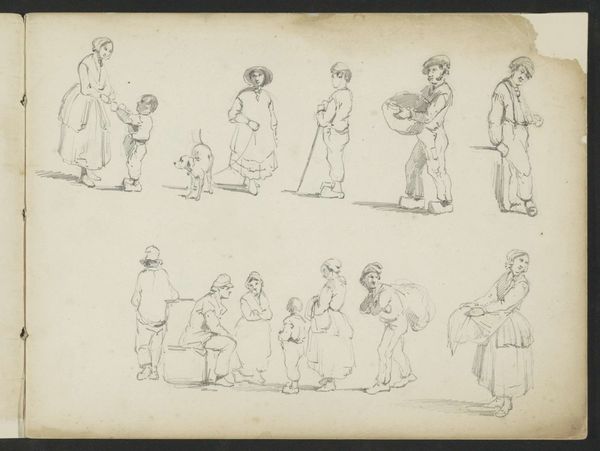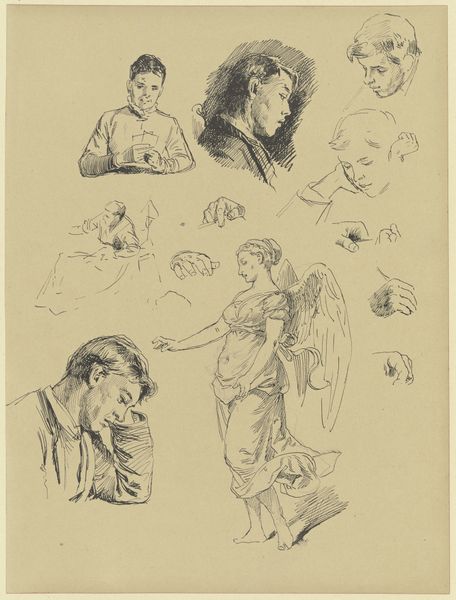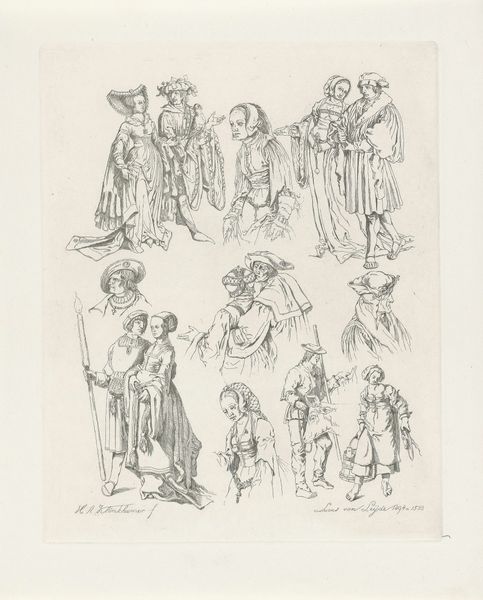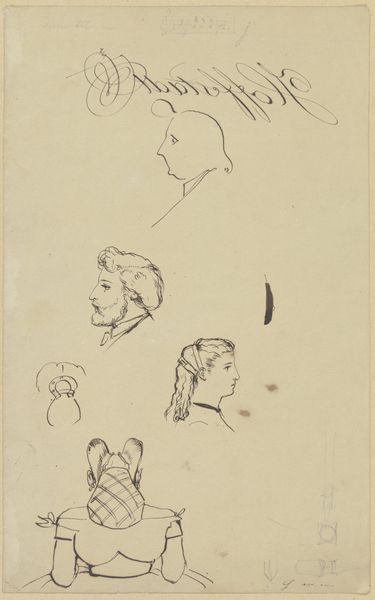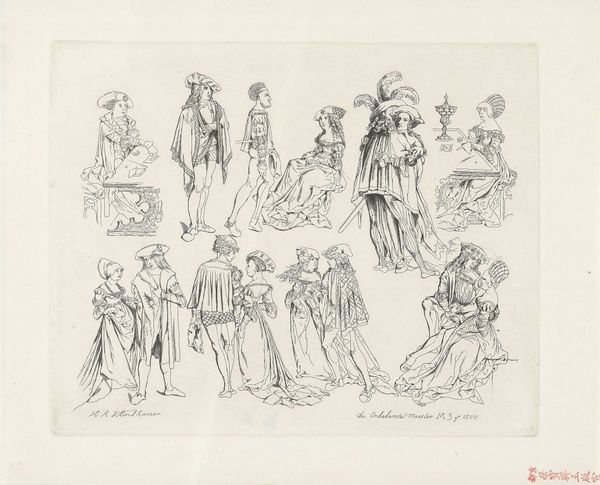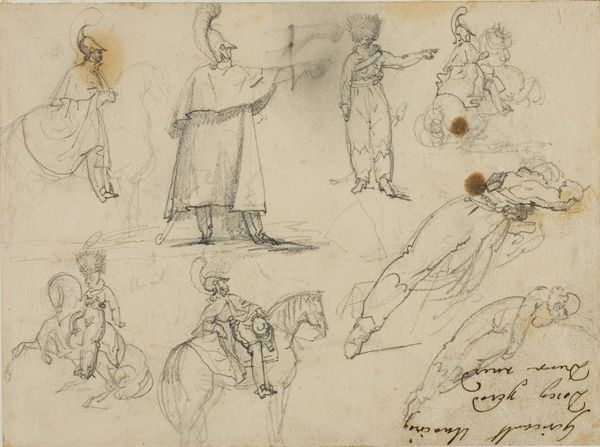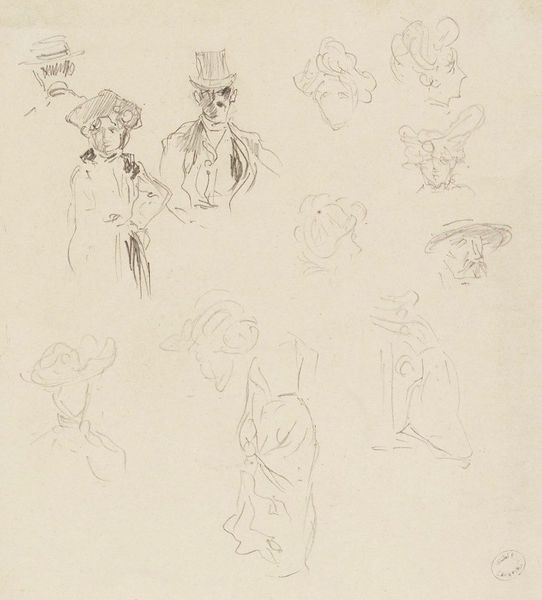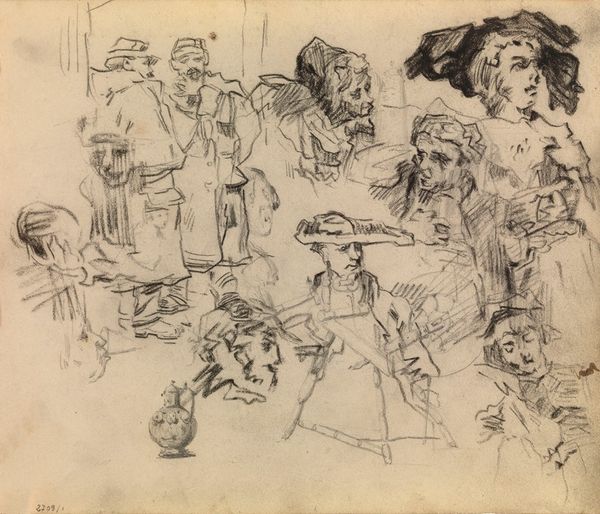
Sleutel bij de prent "Het lichaam van sultan Tippoo wordt herkend door zijn familie" (en een andere prent) 1804
0:00
0:00
drawing, print, etching, pencil
#
portrait
#
drawing
# print
#
etching
#
etching
#
pencil
#
history-painting
#
realism
Dimensions: height 362 mm, width 291 mm
Copyright: Rijks Museum: Open Domain
Curator: This is a rather fascinating sheet of studies by Luigi Schiavonetti, made around 1804. It’s entitled "Sleutel bij de prent 'Het lichaam van sultan Tippoo wordt herkend door zijn familie' (en een andere prent)". Editor: What strikes me first is the almost clinical detachment of the line work. These are studies, yes, but there's a starkness in the way the artist captures the angles of the faces, especially around the figure labeled as Tippoo's corpse. Curator: Indeed. Schiavonetti created this as a preparatory drawing for an etching depicting the aftermath of the Siege of Seringapatam. Tippoo Sultan's defeat marked a significant moment in the British expansion in India. Notice how the composition is divided: the upper section showcases studies related to the assault, while the lower focuses on the Sultan's family identifying his body. Editor: I’m intrigued by the variance in texture achieved purely through line. The hats and turbans have a tangible weight, a sense of the materials used to create them. Observe how the shading builds form, creating a hierarchy of light and shadow that guides the eye. Curator: Absolutely. These details tell us about the importance that the British placed on the taking over the Seringapatam. Schiavonetti's preparatory work provides invaluable insights into the visual strategies employed to legitimize colonial power through art. It's also quite telling to notice how much effort went into illustrating even minor figures. Editor: There's something unsettling about the evenness of detail across the sheet. Every face, whether British officer or member of Tippoo's family, receives a similar level of attention. It complicates any straightforward reading of colonial triumphalism. Curator: A valid point. These images ended up in British households, influencing perceptions of empire. The exoticized, romantic depiction subtly reinforces a sense of British superiority. Editor: And, in that, a visual representation of historical dominance becomes something we can deconstruct and consider anew. Thanks for the illumination. Curator: My pleasure. This artwork gives us the opportunity to dissect how historical events can be translated through artistic skill into lasting political narratives.
Comments
No comments
Be the first to comment and join the conversation on the ultimate creative platform.
